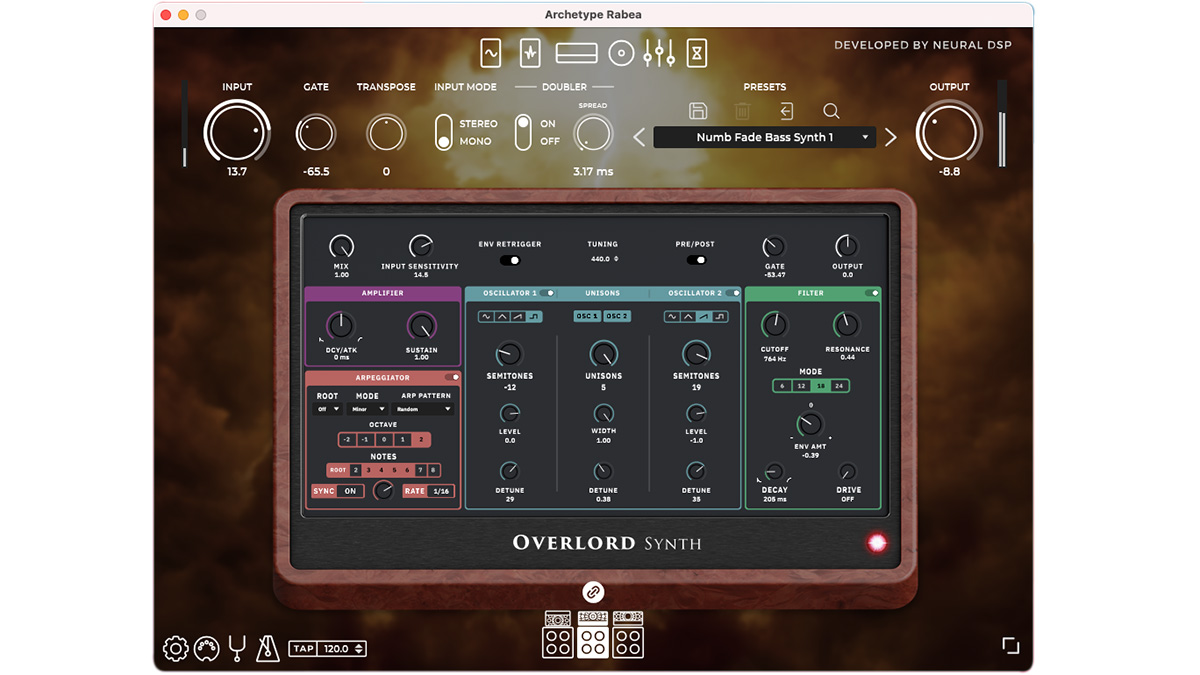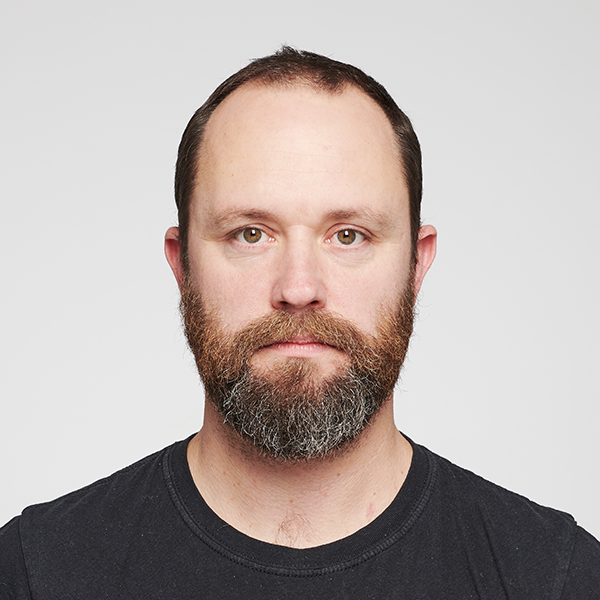MusicRadar Verdict
An amp modelling plugin like no other, with modern tones aplenty and a monosynth for versatility.
Pros
- +
Excellent reverb and delay effects.
- +
Fun and inspirational addition of a monosynth.
- +
Wide variety of clean and dirty guitar tones.
Cons
- -
Preset management could be better.
MusicRadar's got your back
Neural DSP Archetype: Rabea: What is it?
This particular reviewer feels a little late to the game when it comes to Neural DSP’s fabled Archetype guitar amp-modelling plugin series.
Neural DSP’s form in the amp-modelling world has been nothing but stellar. Initially releasing Darkglass and Fortin amp emulations, the company had raised the bar in terms of plugin-based amp modelling and forged the way for its signature plugin range, Archetype.
Instead of emulating a particular piece of hardware, Archetype sets out to distil the character of some of the leading names in guitar playing today, with the likes of Tim Henson, Tosin Abasi and Cory Wong having already been immortalised.
Each plugin within the Archetype range has in common a selection of amp and cab models combined with a plethora of effects, all meticulously engineered to deliver some of the most sought-after amp modelling tones out there. This edition is named after producer and guitarist Rabea Massaad.

Neural DSP Archetype: Rabea: Performance and verdict
Archetype: Rabea follows the same path as its forbears with three amp sims: Clean, Rhythm and Lead; a bunch of cab IRs captured by Neural themselves; pre-effects including overdrive, octaver, fuzz and compressor pedals; two post-effects comprising of reverb and delay; plus a separate four-band parametric EQ for each amp model.
The biggest feature to differentiate this from the other Archetype plugins is the inclusion of a monosynth called Overlord. It’s quite basic by modern softsynth standards, offering a simple, two-oscillator, virtual analogue, subtractive architecture.
Each oscillator features four waveshapes; saw, square, sine and triangle with level, detune and Unison controls all at your disposal. A low-pass filter comes with four slope options, cutoff and resonance, some envelope controls and added drive.
Want all the hottest music and gear news, reviews, deals, features and more, direct to your inbox? Sign up here.
Elsewhere there are enveloping and gain controls, plus the addition of an arpeggiator. The synth’s placement in the signal chain can be easily switched between pre or post, allowing you to affect the signal differently. Combined with the excellent Atlas Delay and Aeons Reverb effects there’s so much room for experimentation.
The addition of a monosynth is a great start for amp modelling plugins in general and it’s something we hope Neural builds on. How great would it be to see some deeper controls or even different sound sources like granular or wavetable? For now, the level of depth just seems right for the application here. Especially with high-gain tones, where anything too complex will just be lost in a sea of mud.
The playability of the synth depends on your own style. You’ll quickly adapt to what works well, which can be fine-tuned with input sensitivity and gate controls. Tracking is fast and works well depending on how hot your signal is on the way in. If you’re loading up the Fuzz and Overdrive effects, expect some glitchy anomalies. Think MXR Blue Box: unpredictable but fun.
Despite all the fun that can be had with Overlord, Archetype: Rabea’s superpower might well just be in the stereo delay and reverb effects, which are just sublime. We often found ourselves bypassing everything else and just using Atlas and Aeons to add lashings of ambience, especially with synth patches, which further shows off this plugin’s versatility for players and producers of all types.
Come for the monosynth, stay for the spatial effects
If we had one gripe, it would have to be with the preset management. Presets are divided into folders relating to the author, and there are many. Guest sound design comes from a variety of Neural favourites including Adam ‘Nolly’ Getgood, alongside a factory folder and a selection from Bea himself. With no way of filtering down preset types, you’ll be wading through countless folders with only some preset names alluding to what they might sound like.
Other than that, this plugin features thoroughly modern tones capable of covering a gamut of genres, perfectly reflecting Massaad’s approach to guitar. The addition of Overlord is genius and above all, fun but while you might come for the monosynth, you might well just end up staying for the spatial effects.
MusicRadar verdict: An amp modelling plugin like no other, with modern tones aplenty and a monosynth for versatility.
Neural DSP Archetype: Rabea: The web says
"Rabea shows Neural DSP at the top of their game. Like the man himself, it’s a class act and I’d encourage any guitar player to give it a try."
Sound On Sound
Neural DSP Archetype: Rabea: Hands-on demos
Neural DSP
Rabea Massaad
Ola Englund
Keyan Houshmand Live
Neural DSP Archetype: Rabea: Specifications
- KEY FEATURES: Amp modelling plugin with cab sim, EQ, pre/post effects and a monosynth.
- FORMATS: VST, AU, AAX, Standalone.
- CONTACT: Neural DSP

I take care of the reviews on MusicRadar and Future Music magazine, though can sometimes be spotted in front of a camera talking little sense in the presence of real musicians. For the past 30 years, I have been unable to decide on which instrument to master, so haven't bothered. Currently, a lover of all things high-gain in the guitar stakes and never one to resist churning out sub-standard funky breaks, the likes of which you'll never hear.
